Contents
- Early History
- Colonial History
- Post-Independence Era and Contemporary Educational Infrastructure
- Primary & Secondary Education
- Institutions of Higher Learning
- N. B. Mehta Science College
- St Gonsalo Garcia College of Arts and Commerce, Vasai
- Viva college, Virar
- St. John College of Engineering and Management
- Local Figures & Organizations
- Padmashri Bhausaheb Vartak
- Sonepat Dandekar Shikshan Mandali
- Tarabai Modak
- Anutai Wagh
- NGOs and Community-Based Education Efforts
- AROEHAN & the Majasheer Shala Initiative
- Some stories from the Covid19 Pandemic
- Graphs
- Enrollment and Dropout Rate
- A. Student Enrollment Numbers
- B. Student Enrollment (Class-Wise)
- C. Student Enrollment (Gender-Wise)
- D. Student Enrollment (By School Management Type)
- E. Drop Out Rate (By Schooling Level)
- F. Drop Out Rate (By Gender)
- Schools
- A. No. of Schools
- B. No. of Schools (Filtered by Gender Mix)
- C. No. of Schools (By School Management Type)
- Teachers
- A. No. of Teachers
- B. No. of Teachers (By School Management Type)
- C. No. of Teachers (Male vs Female)
- Sources
PALGHAR
Education
Last updated on 28 July 2025. Help us improve the information on this page by clicking on suggest edits or writing to us.
The educational framework of Palghar aligns with the broader structure of the Indian education system, encompassing pre-primary, primary, secondary, and higher education. The introduction of the Western education framework in the district changed its educational landscape. Portuguese and British administrators and missionaries became actively involved in shaping education in the region.
Still, even as colonial influences grew, the early 20th century saw a wave of local initiatives; its existence indicated an increasing public awareness regarding the importance of education. Local communities took charge of education, a movement that carried into the post-independence era, shaping the district’s educational landscape in lasting ways.
Early History
Palghar district has long been associated with centres of learning and spiritual activity, particularly due to the ancient city of Nalasopara. Known historically as Shurparaka or Supparak, Nalasopara was once a major port and trading hub that attracted merchants from regions as far as Mesopotamia, Egypt, and Rome. Its strategic location and cosmopolitan atmosphere contributed to its emergence as a significant site for the spread of Buddhism, Jainism, and Hinduism.
Interestingly, Nalasopara finds its mentions in several ancient texts and inscriptions, including the Ashokan edicts, which mark it as one of the earliest historically recorded settlements in the region. It is also referred to in Brahmanical texts as Parshuramtirtha, as it is believed to have been founded by Parshurama, the sixth avatar of Vishnu. According to these traditions, Parshurama introduced Vedic knowledge to the region and protected it with his divine weapon, the parshu (axe).
The Buddhist connection to Nalasopara is equally significant. The area is linked with the story of Purna, a wealthy merchant who became a devoted disciple of the Buddha. According to Buddhist tradition, Purna’s spiritual transformation and miraculous deeds led to the establishment of monasteries and the spread of Buddhist teachings in the region. Legends recount that the Buddha visited Sopara at Purna’s invitation, performing miracles and offering teachings that inspired the construction of a stupa and the conversion of many followers. These narratives, though legendary, reflect the importance of the site and indicate that Vedic and Buddhist systems of education likely existed here in earlier times.
Colonial History
The evolution of educational systems in Palghar district during the colonial era was gradual, shaped by missionary activity, local initiatives, and administrative reforms. However, its development appears to have been limited to certain parts of the district. Still, its earliest roots can be traced to the 16th century, during the period of Portuguese presence along the Konkan coast. With the signing of the Treaty of Bassein in 1543, the Portuguese consolidated control over the region, establishing forts and initiating both trade and religious conversion.
Education became part of their broader colonial and missionary efforts. Notably, St. Francis Xavier visited Bassein in 1548 and encouraged Jesuit missionaries to expand educational outreach in the region. Building on this momentum, a Franciscan missionary is recorded to have founded a school in Bassein (present-day Vasai) in 1586.
However, despite these early beginnings, the long-term impact was uneven. As Teresa Peraira (2016) notes in her study on missionary education in the Vasai region, by the end of the sixteenth century, interest in schooling had declined, and the demand for new educational institutions had waned. The situation worsened over time. When Archbishop Thomas Roberts took charge of the Bombay Diocese in 1928, he observed a marked deterioration in educational engagement in Vasai, particularly. Female literacy remained especially low, and overall interest in education among the local male population was limited. Ongoing tensions between the Padroado (Portuguese ecclesiastical authority) and Propaganda Fide (representing British Catholic interests) further disrupted the functioning of missionary-run schools.
A shift occurred in the early 19th century, when primary education received renewed attention. In 1810, the British administration initiated the establishment of Local Board schools in Vasai. The names of the schools were peculiar, with names such as School No. 1, Bassein Bazar School, and the Papdi School, which were all established before 1870.
Primary education was overseen by the Thane District Board. Alongside these institutions, it is noted that indigenous education continued in parallel, including village schools offering instruction in practical and agricultural skills. A noteworthy development occurred in 1870, when the Municipal Council began subsidizing socially operated schools, offering a monthly grant of Rs. 12 to local associations. This policy suggests a shift towards community involvement and decentralization in the management and promotion of education during this era.
Post-Independence Era and Contemporary Educational Infrastructure
Following India's independence, the education system in Palghar underwent major transformations. The introduction of structured education levels that are pre-primary, primary, secondary, and higher education, and the implementation of National Education Policies, heavily shaped the educational landscape of the district. Over the years, the education sector has developed with contributions from both government-funded institutions and private organizations. Additionally, Educational boards were also introduced, each offering distinct curricula and standards, providing students with more choices.
Primary & Secondary Education
During the colonial period, both public and private efforts in education primarily focused on primary and secondary schooling, as indicated by data from district gazetteers across Maharashtra. Higher education remained underdeveloped in most districts, including Palghar, with gradual improvements over time. While basic infrastructure for primary and secondary education existed, its expansion was closely tied to increasing enrollment and greater involvement of local figures.
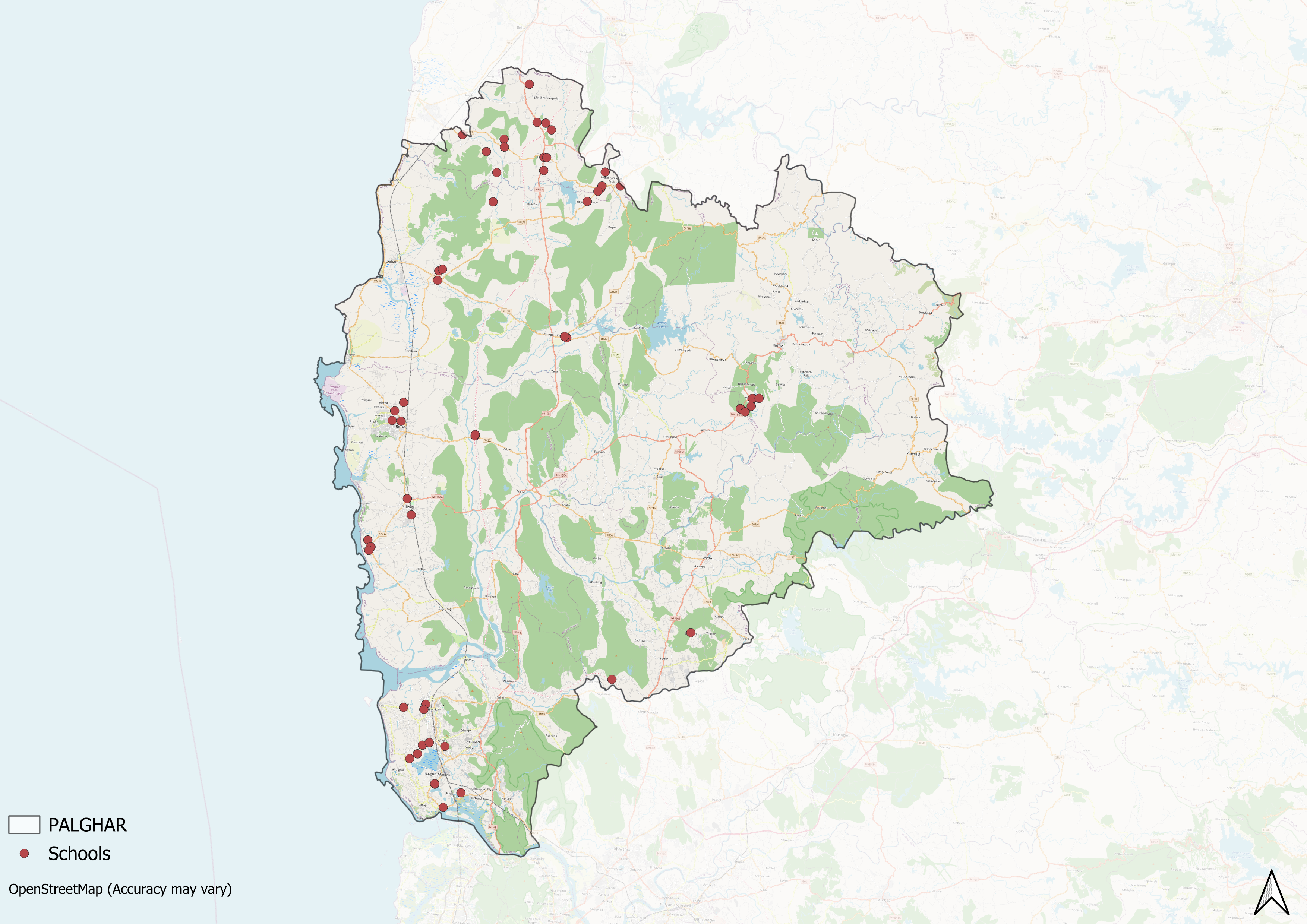
Today, this expansion is evident in the widespread presence of schools across various wards of Palghar, with available data reflecting the steady growth of educational institutions in both urban and rural parts of the district.
Institutions of Higher Learning
Perhaps one of the most notable changes in Palghar’s educational landscape is tied to the establishment of higher education institutions. While primary and secondary schooling expanded steadily, opportunities for advanced education remained limited for much of the district’s history. Over time, local leaders and organizations played a crucial role in addressing this gap, leading to the creation of several colleges. As a result, many institutions in the district today are privately managed, semi-private, or autonomous.
N. B. Mehta Science College
N. B. Mehta Science College, situated in Bordi, was established in the academic year 1994–95. The college was founded by the Gokhale Education Society, one of Maharashtra’s oldest educational institutions, with approval from the Government of Maharashtra and the University of Mumbai. The college initially began with first-year B.Sc. courses; it has since evolved into a full-fledged degree college with a focus on science education.
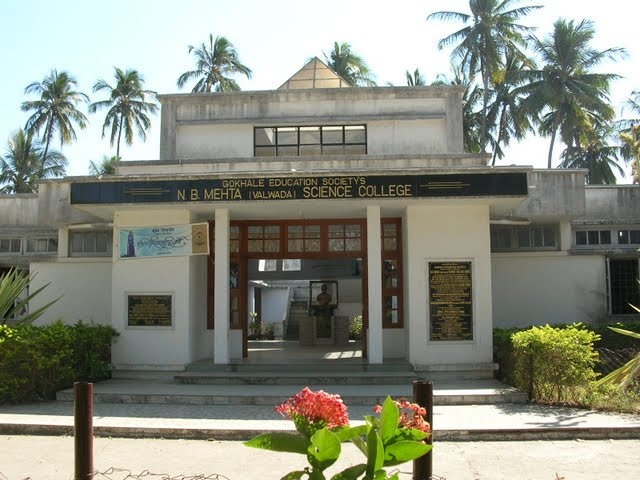
St Gonsalo Garcia College of Arts and Commerce, Vasai
Established in 1984 by the Our Lady of Grace Trust, St. Gonsalo Garcia College offers undergraduate courses in Arts and Commerce. It initially operated from the premises of Thomas Baptista Junior College, which had been set up in 1975. The college moved to its current campus in 1996. The foundation stone of the institution was laid by Pope John Paul II during his visit in 1986.
Viva college, Virar

VIVA College was established in 2001 under the Late Shri Vishnu Waman Thakur Charitable Trust. It offers undergraduate programs in Arts, Science, and Commerce, along with self-financed courses in Management Studies, Mass Media, and Hotel Management.
St. John College of Engineering and Management
Founded by the Aldel Education Trust, St. John College of Engineering and Management offers four-year undergraduate degree programs in engineering and postgraduate programs in management.

In addition to these institutions, a number of centres for higher education operate throughout the district, which offer programmes across various disciplines. While the landscape of higher education has broadened significantly since independence, disparities in access, particularly along geographic lines, remain evident.
Local Figures & Organizations
Padmashri Bhausaheb Vartak
Padmashri Bhausaheb Vartak was a prominent educational reformer who was based in the Vasai region of Palghar district. In 1970, he founded the Vidyavardhini trust with the aim of expanding access to higher education in this part of the Konkan.
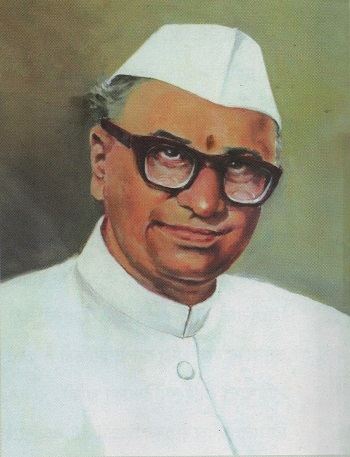
One of the trust’s key achievements was the establishment of the Bhausaheb Vartak Polytechnic in 1984, which provided technical education to students in the rapidly developing Vasai–Virar belt. His efforts contributed to a broader wave of locally driven educational initiatives during the late 20th century.
Sonepat Dandekar Shikshan Mandali
Sonopant Dandekar (also known as Vaman Mangesh Dubhashi) was a philosopher, Sanskrit scholar, and respected Varkari preacher known for his public lectures on the Jnaneshwari and other religious texts. In 1968, in memory of his intellectual legacy, a group of educationists in Palghar founded the Sonopant Dandekar Shikshan Mandali. This led to the establishment of the Sonopant Dandekar Arts and Vaman Shridhar Apte Commerce College in 1970. The institution remains one of the oldest centres of higher education in Palghar town.
Tarabai Modak
Tarabai Modak (1892–1973) was a pioneering educator and social reformer whose work laid the foundation for early childhood education in India. After studying in Mumbai, she dedicated her career to improving preschool education, particularly among Scheduled Tribe communities in the Konkan. In the 1940s, she introduced innovative schooling models such as Anganwadis (courtyard schools), Kuranshalas (meadow schools), and Ghantashalas, which adapted pedagogical methods to suit local needs.
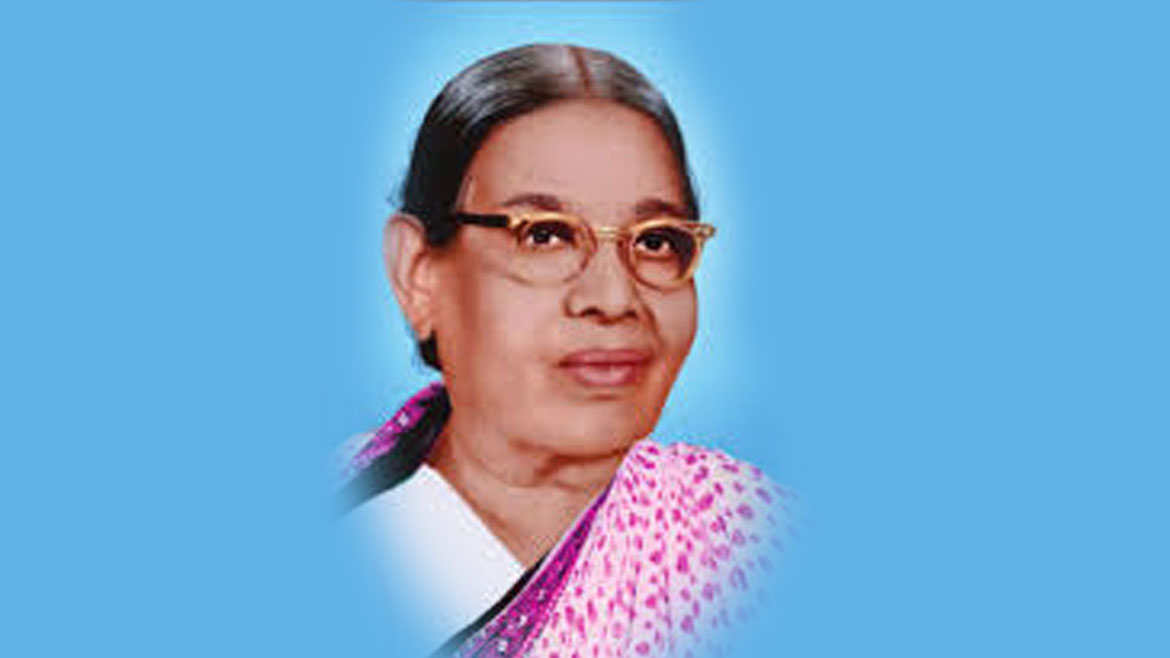
In 1945, she co-founded the Gram Bal Shiksha Kendra at Bordi, later moved to Kosbad Hill in 1957. Her work influenced India’s national policies on child development and inspired the creation of the Integrated Child Development Services (ICDS) in the 1970s. She was awarded the Padma Bhushan in 1962.
Anutai Wagh
Anutai Wagh (1910–1992) was a key figure in rural education and women's empowerment who worked across remote regions in Maharashtra. A trained teacher and social worker, she collaborated closely with Tarabai Modak in the Bordi and Kosbad region. Together, they developed practical, activity-based early childhood learning systems that were sensitive to the socioeconomic conditions of Schedule tribe families.
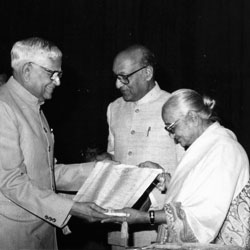
In addition to her educational work, Wagh was actively involved in women’s movements and served as president of the Thane District Stree Shakti Jagruti Samiti, a platform promoting literacy and leadership among rural women. Her methods were later adopted in government-run Anganwadi centres across the country.
NGOs and Community-Based Education Efforts
Education has been a key driver of social reform, particularly in addressing inequality and expanding access to learning. While formal institutions provide structured education, many communities continue to face barriers due to poverty, social stigma, or lack of resources. To address these challenges, various organizations in Palghar have focused on community-based education initiatives, with each working to tackle specific social challenges present in the district.
AROEHAN & the Majasheer Shala Initiative
One such initiative is led by AROEHAN, a non-profit working primarily in the Jawhar and Mokhada blocks of the district. During the COVID-19 pandemic, disruptions to formal education disproportionately affected students in rural and tribal areas of Palghar, where internet connectivity and access to digital devices remained limited. In response to these challenges, AROEHAN launched a series of community-based interventions aimed at supporting continued learning among children at risk of falling behind.
One of the organization’s key initiatives was the Majesheer Shala program, introduced in Zilla Parishad schools across tribal hamlets. The program was informed by Palak Sabha sessions: meetings with parents to understand the specific difficulties faced by families during school closures. These sessions highlighted a growing educational gap among children in remote areas, particularly in the absence of structured learning.
To address this, AROEHAN mobilized local educated youth as volunteer instructors. These volunteers conducted small-group classes that covered core subjects such as Marathi, Mathematics, and Environmental Science, alongside extracurricular activities in the arts and sports. The program also incorporated storytelling, hands-on learning, and celebrations of national and cultural days, creating a more holistic learning environment.
In addition to academic support, the program addressed students’ nutritional needs by providing healthy snacks during class sessions.
According to AROEHAN’s 2020–21 annual report, the Majesheer Shala and related bridge classes reached over 2,300 children across 60 tribal hamlets in Mokhada, contributing to continuity in education during a period of widespread disruption.
Some stories from the Covid19 Pandemic
Teachers in the Palghar district went above and beyond to ensure that students remained engaged and connected to learning, especially during the challenges of the pandemic. With limited access to devices and internet connectivity, many educators found innovative, community-rooted solutions to adapt their teaching methods and reach their students in meaningful ways.
Rohini Dandge, for instance, adapted her teaching schedule to her students’ realities by conducting night classes at 8 p.m. a time when smartphones became available after parents returned from work. This adjustment allowed her to reach students who couldn’t attend lessons during the day. She also encouraged local youth with smartphones to lend their devices to younger children in the community, fostering a culture of shared responsibility. To keep her lessons engaging and accessible, Rohini used a variety of materials, including scanned print resources, educational videos, and songs, which she shared via WhatsApp and Telegram. She also wove in local cultural elements like Warli paintings, making her lessons more relatable and rooted in the students’ everyday lives.
Rekha Swami focused on building a personal connection with her students through short, self-recorded video lessons. Using her old blackboard and an app called Xrecorder, she explained concepts in her own voice, helping students feel a sense of familiarity and comfort. To make learning interactive, she created online quizzes using Google Forms and Testmoz, offering students instant feedback and a sense of progress. Recognizing the importance of community-based learning, Rekha also added local tuition teachers to her WhatsApp group, enabling them to use her video lessons to support their own students.
Rajan Garud turned to creativity to make remote learning fun and emotionally supportive for his students. He invited artist friends to bring puppets into online classes, capturing students’ attention and lightening the mood. He used riddles, indirect questioning, and games to teach academic concepts, encouraging curiosity and critical thinking. Rajan also employed visual techniques (like displaying textbook pictures on screen) to prompt students to describe and discuss what they saw, making lessons more interactive and participatory.
Graphs
Enrollment and Dropout Rate
Schools
Teachers
Sources
Anutai Wagh. 1985. Recipient of Jamnalal Bajaj Award for Development & Welfare of Women and Children.https://www.jamnalalbajajawards.org/Media/pd…
AROEHAN. 2021. Annual Report 2020-21.
Gazetteer of Bombay Presidency. 1882. Gazetteer of the Bombay Presidency: Thana Vol XIII Pt II. Government Central Press.
Gokhale Education Society’s Gokhale College. “About the College.” Gokhale Education Society’s Gokhale College.https://www.ggcollege.ac.in/UserPanel/Displa…
Harvard University. “The Backstory.” Bassein and Beyond. Accessed March 18, 2025https://hum54-15.omeka.fas.harvard.edu/exhib…
Maryanne Buechner. 2020. “Two-Thirds of the World’s School-Age Children Have No Internet at Home.” UNICEF USA.https://www.unicefusa.org/stories/two-thirds…
Monish Shah. 2020. “Sopara: Ancient Port, Trade Center & Teertha.” Indica Today.https://www.indica.today/research/sopara-anc…
Nirmala Bordikar Mahavidyalaya. “About NBM”. Nirmala Bordikar Mahavidyalaya.https://nbmbordicollege.com/About_NBM.php
PTI. 2024. “Food Poisoning: 150 Students of Palghar Ashram Schools Under Observation.” Business Standard.https://www.business-standard.com/india-news…
Teresa Pereira. 2017. “Role of Local Self Government in the Progress of Learning in Bassein.” Scholarly Research Journal for Interdisciplinary Studies.https://www.srjis.com/downloadPdf/1513330457…
Vidya Vikasini School. “About Us”. Vidya Vikasini School.https://vidyavikasinischool.com/about.php
Viva College. 2023. Prospectus 2023-24.https://vivacollege.org/pdf/Prospectus%20%20…
Vivek Patwardhan. 2024. Aroehan's 'Majesheer Shala' Project. YouTube.https://www.youtube.com/watch?v=8H8jjzoYYEk
Last updated on 28 July 2025. Help us improve the information on this page by clicking on suggest edits or writing to us.